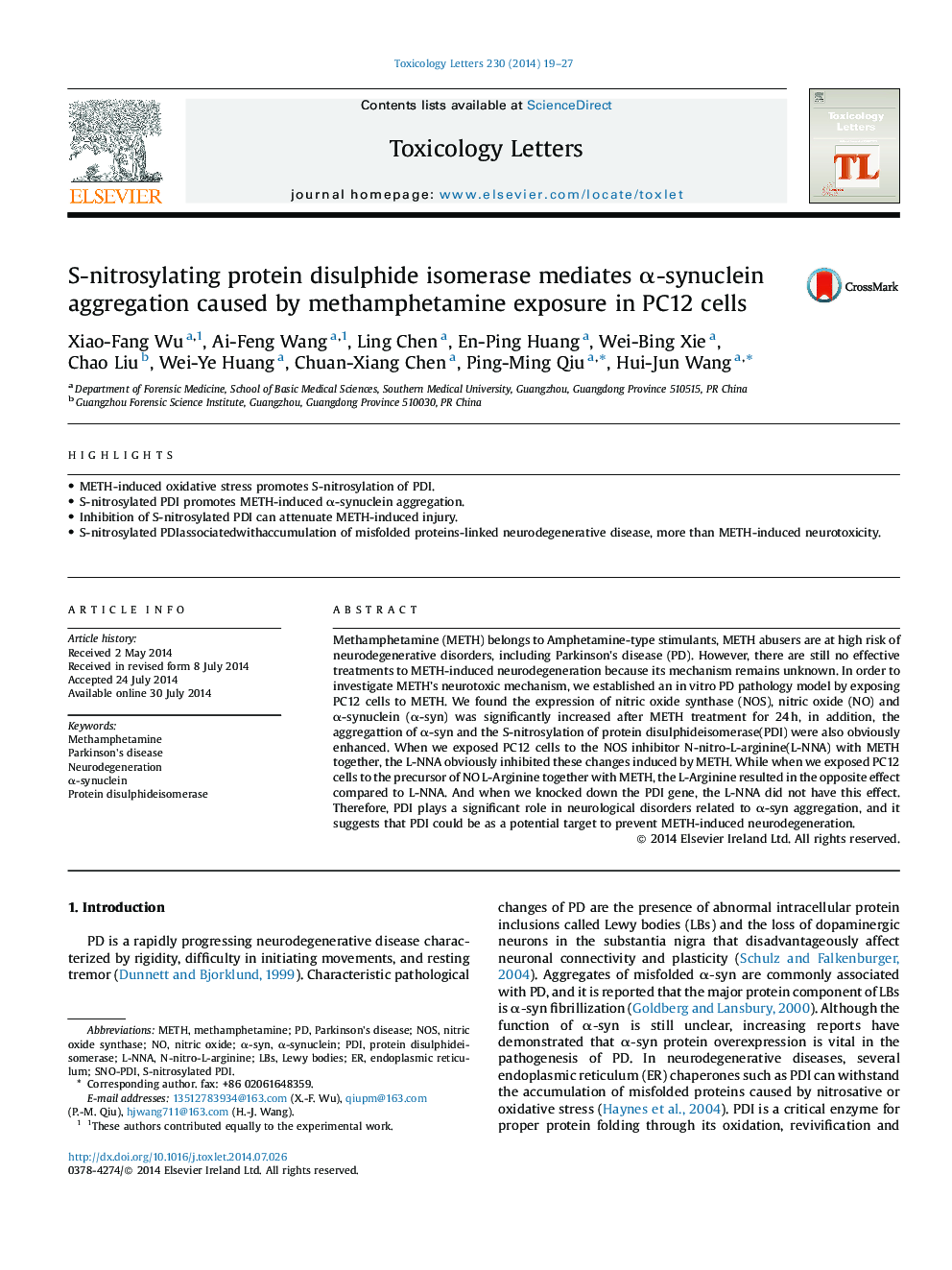| Article ID | Journal | Published Year | Pages | File Type |
|---|---|---|---|---|
| 2598923 | Toxicology Letters | 2014 | 9 Pages |
•METH-induced oxidative stress promotes S-nitrosylation of PDI.•S-nitrosylated PDI promotes METH-induced α-synuclein aggregation.•Inhibition of S-nitrosylated PDI can attenuate METH-induced injury.•S-nitrosylated PDIassociatedwithaccumulation of misfolded proteins-linked neurodegenerative disease, more than METH-induced neurotoxicity.
Methamphetamine (METH) belongs to Amphetamine-type stimulants, METH abusers are at high risk of neurodegenerative disorders, including Parkinson's disease (PD). However, there are still no effective treatments to METH-induced neurodegeneration because its mechanism remains unknown. In order to investigate METH’s neurotoxic mechanism, we established an in vitro PD pathology model by exposing PC12 cells to METH. We found the expression of nitric oxide synthase (NOS), nitric oxide (NO) and α-synuclein (α-syn) was significantly increased after METH treatment for 24 h, in addition, the aggregattion of α-syn and the S-nitrosylation of protein disulphideisomerase(PDI) were also obviously enhanced. When we exposed PC12 cells to the NOS inhibitor N-nitro-L-arginine(L-NNA) with METH together, the L-NNA obviously inhibited these changes induced by METH. While when we exposed PC12 cells to the precursor of NO L-Arginine together with METH, the L-Arginine resulted in the opposite effect compared to L-NNA. And when we knocked down the PDI gene, the L-NNA did not have this effect. Therefore, PDI plays a significant role in neurological disorders related to α-syn aggregation, and it suggests that PDI could be as a potential target to prevent METH-induced neurodegeneration.
